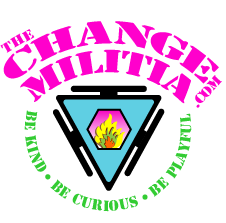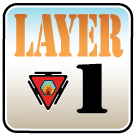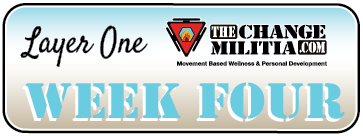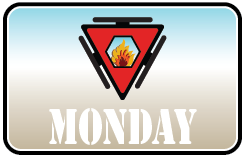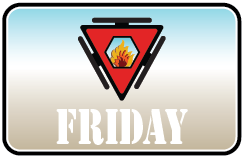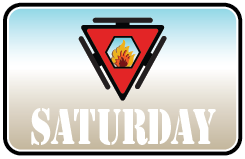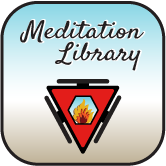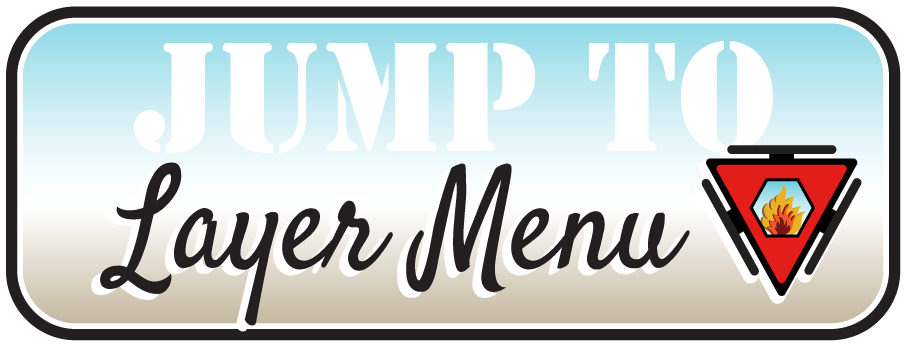
Layer One, Week Four – Sunday
- Read Week Four Concepts
- Watch Video, Read Instructions, and Practice –
Sunday’s Focus
Make a mental note today when things feel difficult. Be aware of mental, physical, and emotional movements or interactions that are challenging in some way.
Sunday’s Concepts
As you move through your day, feel and reflect on what obstacles, drag, or resistance you perceive. What does it feel like you had to overcome? What feels hard or effortful? What did you not want to do? Where did you not want to be? When did you judge the present moment as negative?
These are ways you resist. They might seem frivolous, obvious, juvenile, or negative. They might reflect poorly on you and not show you in your best light. That is the point. Our subconscious minds are petty, immature, impulsive, and cowardly.
As you continue to identify your habits, begin to become aware of what resistance feels like for you and the thoughts, emotions, and labels you connect to the feelings of resistance.
What you now label as feelings, we will begin to break down into the component sensations of each feeling. If emotions are feelings, and feelings are a set of sensations, then emotions are groupings of sensations.
As you feel an emotion and then categorize it with a label, see if you can feel the sensations that accompany each label.
Stressed Out and Overwhelmed are labels you typically assign when your energy level is uncomfortable.
Monday’s Focus
Continue to be aware of things that challenge you. When you identify them, see if you can become aware of what it feels like. What are the sensations that accompany difficulty?
Monday’s Concepts
We are going to be spending quite a bit of time on sensation. Several things will happen as you increase your sensory awareness and feel increasingly subtle sensations. You will become much more present to what is influencing your mood, energy, mindset, and motivation. You will be able to feel more quickly when things begin to change or transition.
Put simply, you will begin to understand your own nature, what makes you tick, your habits, and your predispositions. You will be able to feel where you limit yourself and then where you have capacity that you are not utilizing.
Tuesday’s Focus
As you continue to identify and acknowledge your challenges, catalogue the thoughts that accompany them. What word, phrase, or belief comes to mind when things seem hard?
Tuesday’s Concepts
When you feel the nature of your relationships and the qualities of your resistance, you will understand all your relationships in a new, deep, and very transparent way. You will feel the fear, hope, demand, projection, anticipation, and expectation that drives you and others to limit or increase intimacy, connection, and collaboration.
Once you can feel what drives you and others, you can communicate with it. You will be speaking to what people are feeling, fearing, and forecasting. When you do, everything will get easier, more efficient, and incredibly more intimate. You will connect more deeply because you are connecting with all your bodies (mental, physical, emotional, and energetic) with all of their bodies, not just the words.
This is empathy and it is the most powerful communication, relationship, presencing, and community building tool there is.
Layer One, Week Four – Wednesday
- Read Wednesday’s Concepts
- Practice –
Wednesday’s Focus
Identify and acknowledge your challenges and see if you can connect them to emotional labels. What emotions come up when difficulties happen? Do you get angry, sad, frustrated, distracted, or determined?
Wednesday’s Concepts
The Sensation Awareness practices you will be using over the next several weeks will help you to get in touch with the quality of your sensations. In later layers, you will learn new ways to sense those sensations in others. For now, concentrate on feeling them in yourself. Feel your emotional states as sensations. Compare the differences between where and how you feel anger and happiness in your body.
Imagine baking a cake, now imagine baking a cake with one less ingredient. Two fewer ingredients? Three? Do you still have a cake?
Every emotion, belief, truth, story, drama, resentment, jealousy, fear, and failing is the same way. You find the components and start changing them until you start baking different cakes … or pies … or giraffes … or submarines. As you bake different cakes, your personality will change and so will your results, relationships, and everyday experience of life.
Thursday’s Focus
When challenged, how does your body react? Where do you get tense, numb, and/or frenetic? What does your reaction feel like?
Thursday’s Concepts
Feel sensations as components in your emotions. If, when you are angry, you clench your jaw and tense the back of your neck; try unclenching your jaw and loosening your neck and then see what happens. If you can find, identify, and alter enough of the components of your anger, you can’t be angry anymore.
If you have a habit of baking Victoria Sponge cakes and remove the flour, sugar, eggs, and butter from your pantry, it will be impossible to create that particular cake.
If you get a headache as your neck and shoulders gets tense, creating a habit of softening, relaxing, and moving your shoulders will eliminate the tension. No tension, no tension headache.
Friday’s Focus
Continue to be aware of things that challenge you. See if you can feel the difference between your physical reaction (like tension), and your emotional reaction. If your reaction is mostly mental, what happens in your body?
Friday’s Concepts
What you will be sensing as you increase your ability to feel are two things: resistance and proprioception. Proprioception is your internal GPS. Physical proprioception allows you to subconsciously scratch your nose without poking out your eye or walk down stairs while texting.
There is also mental, emotional, and energetic proprioception that deal with your relationships to others and your environment.
Saturday’s Focus
Connect your ability to feel difficulties and see if you can discern the qualities in each of your bodies (physical, mental, emotional, environmental, and energetic).
Saturday’s Concepts
Mental proprioception is your ability to be aware of the thoughts, images and beliefs that are present in your current mental picture.
Emotional proprioception is your awareness of how past events and future fears are inhibiting your ability to be present.
Energetic proprioception is the ability to feel your energy, other’s energy, and how those energies co-mingle.
Environmental proprioception includes the relationships that form between the physical, mental, emotional, and energetic energies.
This program and community will help you connect all five bodies of proprioception (physical, mental, emotional, environmental, and energetic). That knowledge will give you context for every aspect of your life, relationships, and potential.
Sensation Awareness – Layer One, Level One
We are going to start to explore the world of transition: the gross and the subtle. We will begin by becoming aware of the difference between internal, external and superficial sensations.
Step 1 – Take a Current30. Sit as quietly as possible and begin to assess your current environment, internal and external.
Step 2 – Next, focus on your abdomen. Your abdomen is generally considered to be the area from your diaphragm to your pelvis. It houses your digestive and reproductive organs. Feel it. Identify qualities. Is it gurgling, cramping, full, empty, heavy, bloated, active, warm, numb, or tight?
Step 3 – What is the emotional quality? Are there any emotional labels you would associate with how your abdomen feels?
Step 4 – What comes to your mind as you focus on your belly?
Step 5 – Feel the effects that breathing has on how your abdomen feels. Do a few square breaths and feel for the changes at each phase.
Step 6 – Continue for several minutes tracking the qualities outlined in steps 2-5.
Step 7 – Do the same thing focusing on your skin and the area just beyond or outside of your skin.
Step 8 – Follow the same instructions and feel your environment. This will be trickier and require some faith. Allow yourself to believe that you are feeling something without listening to the moderator voice saying you aren’t. An example of feeling your environment is when you get the feeling someone is looking at you, and when you turn around, someone is.
Step 9 – Smile, pat yourself on the back (literally) and then share your experiences on the FB group.
Why it Matters: Empathy (the ability to feel what others are feeling) starts by beginning to have a fuller sense of what you are feeling. Your emotions are a composite of your sensations. This movement is the doorway. Take your time, feel for the subtle. Feel for things you have never felt before. The invention of the microscope opened up a vast frontier of things previously thought not to exist.
Everyday Usability: When you can feel your sensations and understand how they influence your emotions, you can begin to determine your emotions by generating the appropriate sensations. Movement will be your cure for anger, frustrations, depression, jealousy, lethargy, and grief.
Progression: The next level of this will begin to increase your awareness and discernment of your edges, your too points.
